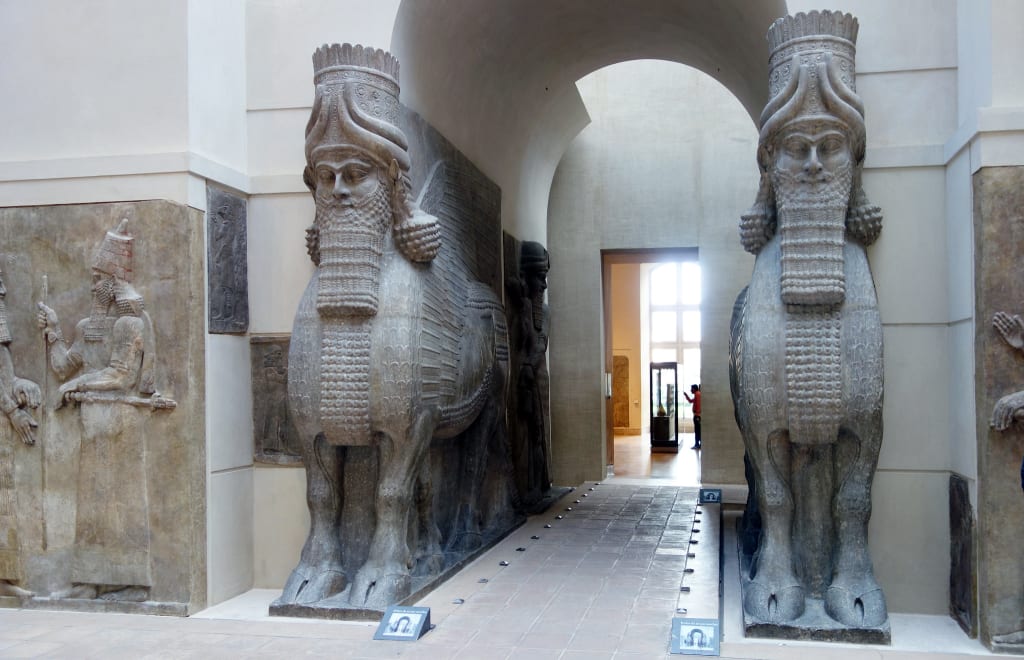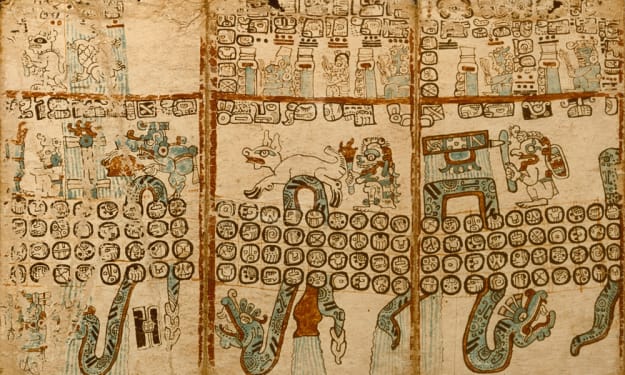Assyrian Lamassu: Guardians of Ancient Splendor
History

The Assyrian Lamassu, majestic statues that embody a blend of mythological and protective symbolism, stand as iconic representations of Assyrian art and architecture. These colossal sculptures, combining human, bull, and bird elements, were prominent in the palaces and gateways of ancient Assyria. This article explores the origins, design, significance, and enduring legacy of the Assyrian Lamassu.
Origins and Historical Context
The Lamassu originated in the ancient Assyrian Empire, which flourished from the 25th century BCE to the 7th century BCE in Mesopotamia, corresponding to modern-day Iraq. The Assyrians, known for their military prowess and architectural achievements, erected these statues during the Neo-Assyrian period (911-609 BCE) to protect their cities and palaces.
The Lamassu served as guardians, symbolizing the might and protection of the Assyrian gods. Positioned at the entrances of palaces and city gates, they were intended to ward off evil spirits and enemies, ensuring the safety and prosperity of the empire.
Design and Construction
The design of the Lamassu reflects a sophisticated blend of artistry and engineering, embodying the following key characteristics:
- Hybrid Form: The Lamassu combines the body of a bull or lion, wings of an eagle, and the head of a human. This fusion symbolizes strength, swiftness, and intelligence, respectively.
- Colossal Size: These statues were massive, often standing over 4 meters (13 feet) tall. Carved from single blocks of stone, their size and weight required advanced engineering techniques for their construction and placement.
- Intricate Detail: The craftsmanship of the Lamassu is evident in their detailed features. The human head typically has a stylized beard and elaborate headdress, while the animal body displays meticulously carved muscles and feathers.
- Architectural Integration: The Lamassu were usually placed at gateways with one facing outward and another inward, providing a sense of continuity and protection from both directions. They were often accompanied by cuneiform inscriptions that glorified the king and invoked divine protection.
Cultural and Religious Significance
The Lamassu held profound cultural and religious significance in Assyrian society:
- Protective Deities: As hybrid creatures, the Lamassu were considered divine protectors. They embodied the power and authority of the gods, believed to safeguard the city and its inhabitants from harm.
- Symbol of Royal Power: The placement of Lamassu at palace entrances reinforced the king’s authority and divine right to rule. They symbolized the king’s role as the protector of his people, under the aegis of the gods.
- Religious Iconography: The detailed depictions of the Lamassu, combined with accompanying inscriptions, reflected the Assyrians' religious beliefs and practices. They were integral to the visual and spiritual landscape of Assyrian architecture.
Historical Impact and Rediscovery
The rediscovery of the Lamassu in the 19th century brought significant attention to Assyrian art and architecture:
- Archaeological Discoveries: The excavation of Assyrian sites such as Khorsabad, Nimrud, and Nineveh unearthed numerous Lamassu statues. These findings provided valuable insights into Assyrian civilization and its artistic achievements.
- Preservation and Display: Many of the discovered Lamassu were transported to museums worldwide, including the British Museum in London and the Louvre in Paris. Their preservation has allowed for continued study and appreciation of Assyrian culture.
Legacy and Modern Relevance
The legacy of the Assyrian Lamassu continues to influence art, culture, and scholarship:
- Cultural Heritage: The Lamassu are celebrated as symbols of Mesopotamian cultural heritage. They connect modern-day Iraq and the global community to the rich history of ancient Assyria.
- Artistic Inspiration: The design and symbolism of the Lamassu have inspired various forms of contemporary art and architecture, reflecting the timeless appeal of these ancient guardians.
- Educational Significance: The Lamassu serve as educational tools, providing insights into Assyrian religion, art, and engineering. They are integral to the study of ancient Near Eastern civilizations.
Conclusion
The Assyrian Lamassu stand as monumental achievements in ancient art and architecture. Their intricate design, symbolic significance, and protective function highlight the sophistication and cultural richness of the Assyrian Empire. Rediscovered and preserved, these majestic statues continue to captivate and educate, preserving the legacy of a civilization that once dominated Mesopotamia. As enduring symbols of protection and power, the Lamassu remain iconic guardians of ancient splendor.
About the Creator
Marveline Merab
“History never repeats itself. Man always does.”
― Voltaire
Enjoyed the story? Support the Creator.
Subscribe for free to receive all their stories in your feed. You could also pledge your support or give them a one-off tip, letting them know you appreciate their work.






Comments
There are no comments for this story
Be the first to respond and start the conversation.